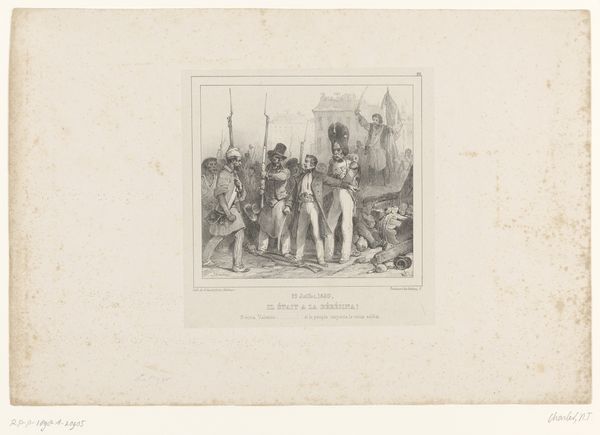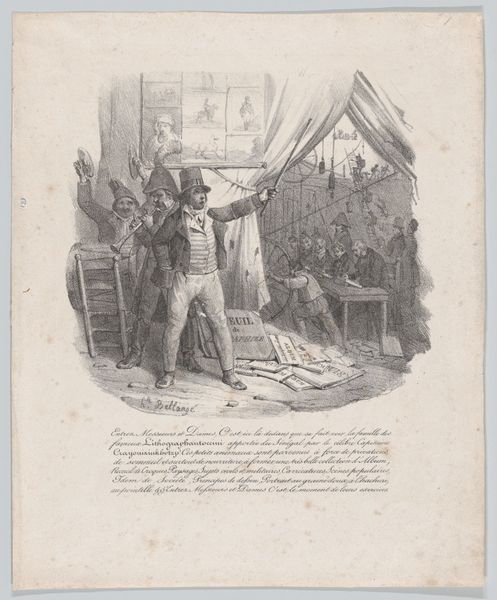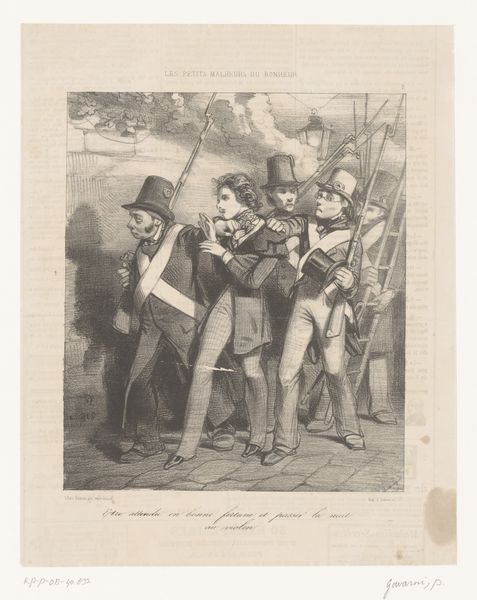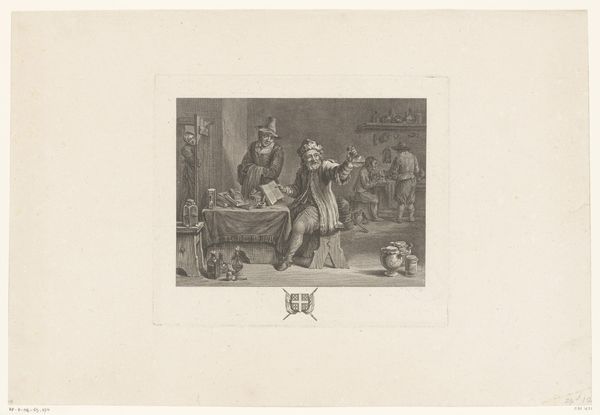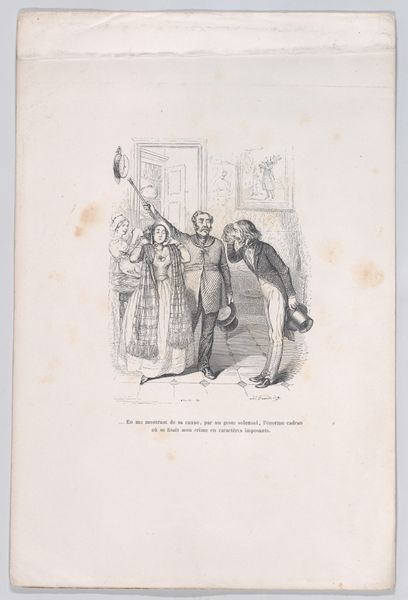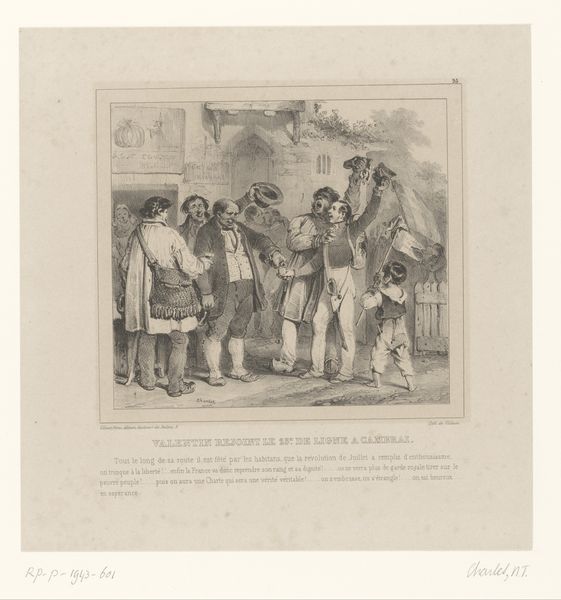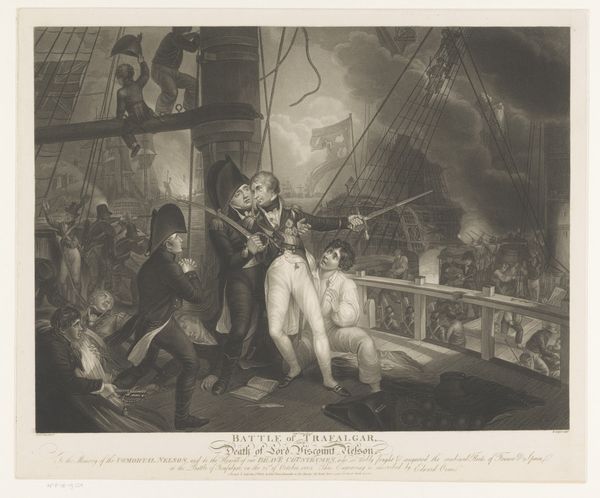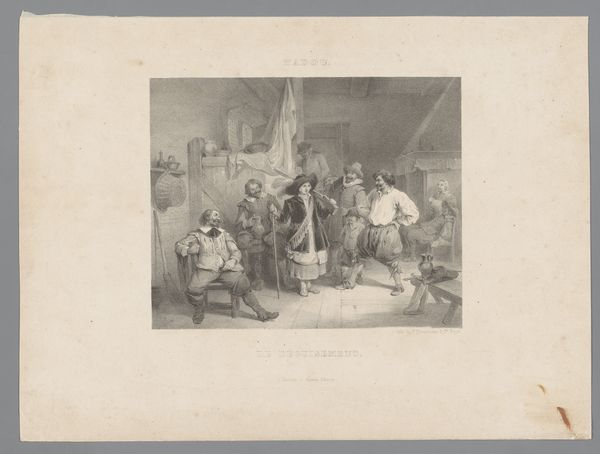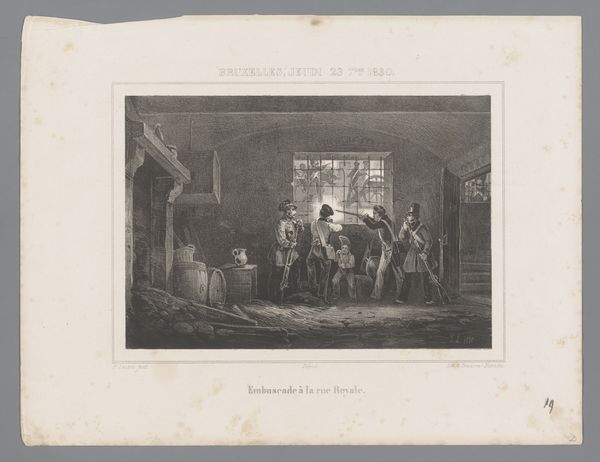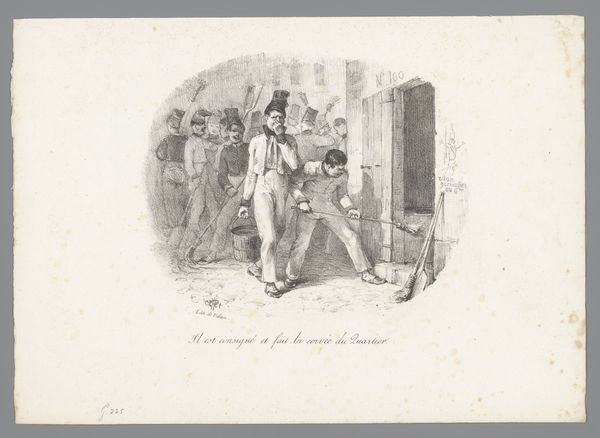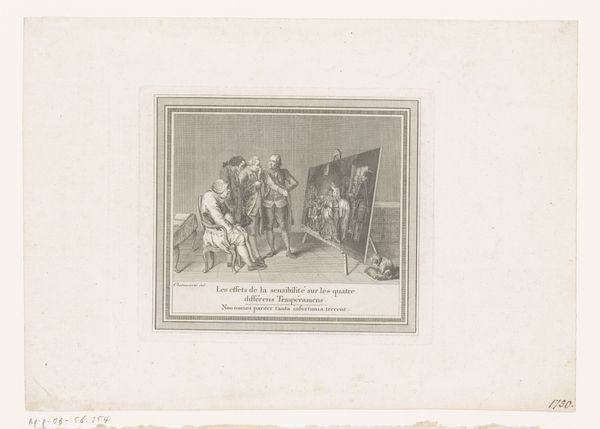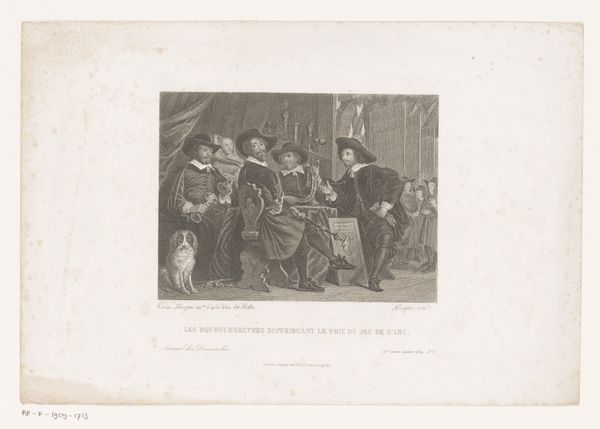
lithograph, print
#
lithograph
# print
#
landscape
#
figuration
#
genre-painting
#
history-painting
#
academic-art
Dimensions: 400 mm (height) x 285 mm (width) (billedmaal)
Editor: Here we have Adolph Kittendorff's "Christian den fjerde", a lithograph from the 1880s. The scene depicts a battle at sea, with figures in period clothing amidst smoke and chaos. It's quite dramatic and clearly intended to be historically significant. How would you interpret the public role of a piece like this? Curator: Given its creation in the 1880s, well after the events it depicts, it's clearly intended to function as a piece of nationalistic imagery. How do you see it connecting to ideas of Danish identity at that time? Editor: I guess it's meant to evoke pride and a sense of shared history. Were historical paintings like this common, serving a particular social function? Curator: Exactly. These historical depictions played a vital role in constructing a visual narrative of Danish identity. Museums and public exhibitions displayed such pieces, solidifying these narratives and fostering a sense of collective memory and, sometimes, legitimizing the present through selective portrayals of the past. Have you noticed any elements that could signal specific political messages beyond mere patriotism? Editor: The king is prominently placed, pointing forward with authority. It reinforces leadership at a time perhaps when monarchy felt threatened, so that feels politically loaded. Curator: Indeed. The specific framing of Christian IV, with his wound only subtly indicated, allows for a presentation of stoic leadership in the face of adversity. But does it accurately represent the past, or does it serve another function entirely? Editor: Now that you point that out, it seems more like historical mythmaking. It certainly gives me a new perspective to consider when looking at historical art. Curator: It reveals the complexities in understanding how artworks are not just aesthetic objects, but active participants in shaping cultural memory and political discourse. We both learned to look beneath the surface!
Comments
No comments
Be the first to comment and join the conversation on the ultimate creative platform.
